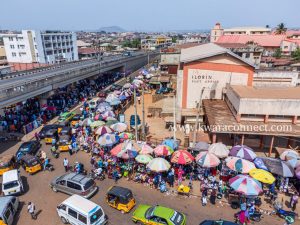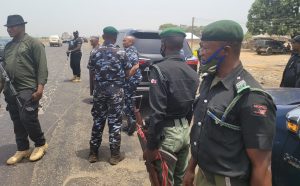This woman left North Korea 70 years ago. Now virtual reality has helped her return
Hyun Mi was 13 years old when she fled Pyongyang with her parents and five siblings to escape fighting on the Korean Peninsula. Chinese troops were approaching the North Korean capital and her family planned to hide further south until they passed.”I thought it would be a week, but that week became 70 years,” said Hyun, now 83.But now, for the first time since the family fled, Hyun has been able to visit her childhood home — or at least a version of it — using virtual reality technology. In the absence of real-life family reunions, the South Korean government is hoping a new virtual reality project will provide some comfort to aging North Korean refugees who fear that time is running out. Fleeing North KoreaThousands of people like Hyun fled North Korea during the Korean War in the 1950s, across the border into China and Russia. Many ended up in South Korea.Picture released on December 26, 1950 of Korean civilians escorted by a military police jeep, fleeing to the South Korea. The picture was taken during the Korean War between North and South Korea. Credit: AFP/Getty ImagesHyun said many North Korean women stayed behind to guard their houses while men and their children fled, afraid that they would be killed by Chinese soldiers, who were considered less likely to kill a woman. Her family left her two younger sisters, aged 6 and 9, in the care of their grandmother.They planned to come back when the fighting eased, but after war ended with an armistice in 1953, North and South Korea erected an almost impenetrable border between the countries, preventing anyone from crossing either side. Many families like Hyun’s became separated from the places they knew and the people they loved.In the decades since, North Korea has become increasingly isolated from the world, led by a dynasty of dictators that wants the reunification of the Koreas but under its own terms.Unlocated picture taken January 18, 1951, shows Korean refugees passing frozen rice fields as they fled to the south. Credit: AFP/Getty ImagesWhile the two countries have allowed select families to reunite for brief and emotional meetings, most families that were separated during the war have never been able to see their loved ones.Meetings are conducted by a lottery system based on age and the strength of family ties. Reunions have been canceled in the past when relations between the two countries have deteriorated. The last meetings took place in 2018, when 89 families from South Korea were able to meet with their North Korean relatives. Many who took part were in their 90s.Reminders of the past The anguish of separated families prompted South Korea’s Ministry of Unification to ask the country’s Red Cross to create a project to connect them with their hometowns. The Red Cross worked with Ahn Hyo-jin, the chief executive of Seoul-based VR company Tekton Space, to create VR experiences for North Korean refugees. “There are many displaced people in Korea and all of them are longing to visit their hometown but cannot due to the circumstances,” Ahn said. Hyun — a well-known singer in South Korea whose hits include a 1960s song about being separated from loved ones — was the first North Korean refugee to take a virtual tour of her homeland. A 3D artist’s sketch of Pyongyang based on Hyun Mi’s memories. Credit: Courtesy Ministry of UnificationIt wasn’t easy to recreate places in reclusive North Korea, Ahn said.His company interviewed Hyun, asking her to recall vivid moments from her childhood. As she spoke, a designer sketched what she described, checking periodically to see if the drawing matched her memories. Those sketches were then turned into 3D designs. “It was very daunting when we began,” said 3D designer Moun Jong-sik. “What if the thing that I made does not resemble her memories?”But when Hyun put on the VR headset in September this year, she found she couldn’t stop crying.”I made it to North Korea!” Hyun exclaimed. A virtual reality recreation of the market in Pyongyang, North Korea, where Hyun Mi spent her childhood. Credit: Courtesy Ministry of UnificationThe recreation of Pyongyang wasn’t exactly the same as she remembered, she said, but it was close. As Hyun surveyed a snow-covered recreation of the house where she grew up, she said she kept thinking about her parents, now long dead.”The faces of my mother, father, sisters and brothers flashed before me,” she said. Hyun remembered how crowded their house was with eight siblings around the dinner table, and sneaking into her dad’s store to eat squid without him knowing. She saw a seafood market in Pyongyang where she used to play jump rope, and Taedong River, where she used to swim as a child. Hyun still lives with the pain of leaving behind two of her sisters. She briefly united with one of them in China 20 years ago, a meeting made possible by a broker with business ties in North Korea. Their meeting was filmed by a documentary crew and later televised. Her sister was just 6 years old when she left, and would live a much tougher life.”If only I came with you, I could have been a star singer just like you,” Hyun recalled her sister saying at the reunion. A recreation of Hyun Mi’s house in Pyongyang. Credit: Courtesy Ministry of Unification”She was almost 60 but she still looked the same. I saw how she lost all her hair, all her teeth and toenails, too,” Hyun added. In the 1990s — around the time Hyun met with her sister — North Korea was hit by a famine that led to an estimated 600,000 deaths, though earlier estimates put the figure much higher. “Even today when I go to a buffet restaurant, I cry, because there is such an abundance of food,” she said. “It pains me greatly to see any food thrown out because it makes me think of my sisters in the North.”Future plans for refugeesAlthough there is no official count on the number of North Korean refugees in South Korea, South Korea’s Ministry of Unification said in its latest statistics released last month that, since 1988, 133,000 people have officially registered to meet their family in the north. But the chances of those reunions are dwindling as the refugees grow old. As of November, there are 49,700 refugees of those registered still alive in South Korea. Ahn hopes Hyun’s experience is only the start. The country’s unification ministry has shown interest in expanding the project next year to model other regions where refugees have previously lived, says Ahn. A ministry official said it is currently considering a plan, although they have no timeline yet. But, creating bespoke projects for every refugee will not be possible, he added. Ahn’s company has interviewed a number of displaced people who, like Hyun, wish they could visit their hometown. They also wish to see their family, but the VR technology can’t help with that — the experience doesn’t include people.Hyun said while the virtual reality project gave her some comfort, what she really wants is the freedom to see her family members in real life.”I don’t want a lot — I don’t even want unification. I’d just appreciate if we can visit each other,” she said.







